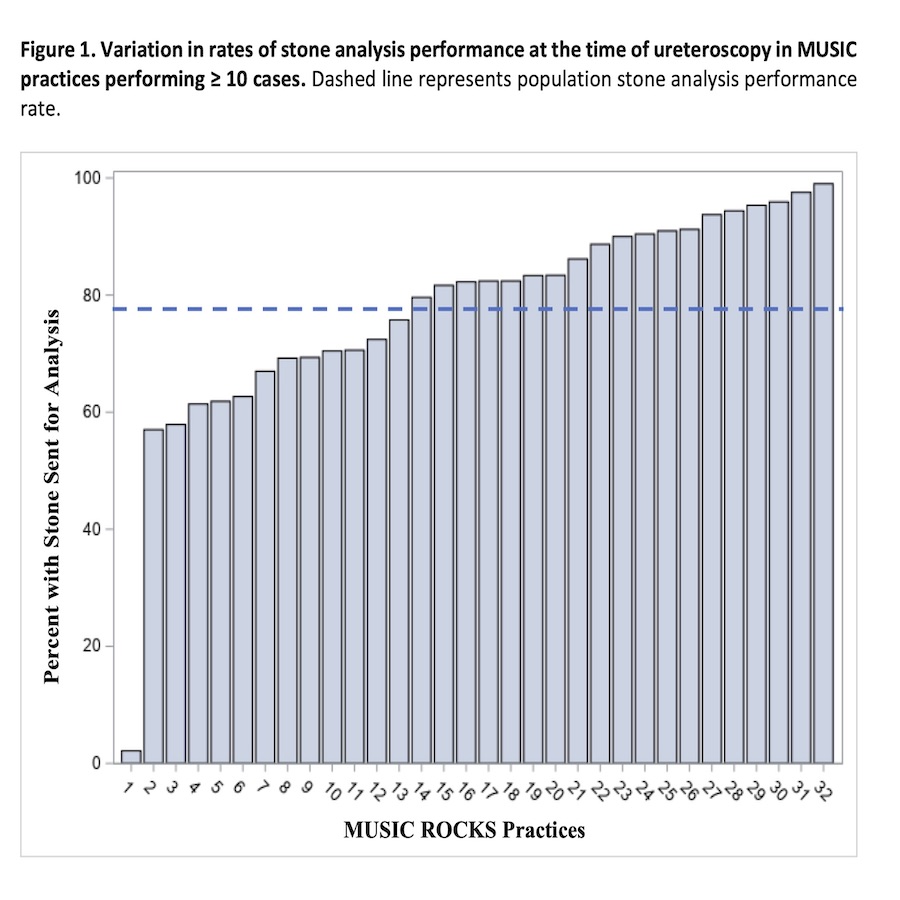Back
Poster, Podium & Video Sessions
Moderated Poster
MP13: Health Services Research: Practice Patterns, Quality of Life and Shared Decision Making I
MP13-12: Practice Patterns and Predictors of Urinary Stone Material Submission for Analysis Following Ureteroscopy: Results from a Statewide Surgical Collaborative
Friday, May 13, 2022
2:45 PM – 4:00 PM
Location: Room 228
Isaac Palma-Zamora*, Detroit, MI, Stephanie Daignault-Newton, Ann Arbor, MI, Mohit Butaney, Grace Yaguchi, David Leavitt, Detroit, MI, Casey Dauw, Khurshid Ghani, Ann Arbor, MI, Naveen Kachroo, Detroit, MI, for the Michigan Urological Surgery Improvement Collaborative, Ann Arbor, MI
- IP
Isaac Palmazamora, MD
Resident
Henry Ford Hospital
Poster Presenter(s)
Introduction: Current American Urological Association guidelines on the surgical management of stones support the submission of stone material for analysis following ureteroscopy to guide treatment and future preventative strategies. We sought to evaluate statewide practice patterns and identify predictors of post-procedural urinary stone submission for analysis.
Methods: All patients undergoing primary ureteroscopy for the management of urolithiasis from 2016 to 2021 were identified using the Michigan Urological Surgery Improvement Collaborative’s Reducing Operative Complications from Kidney Stones (MUSIC ROCKS) prospectively collected clinical registry from contributing practices performing at least 10 ureteroscopic procedures. We determined rates of stone analysis performance at the time of ureteroscopy across practices and demographic, clinical, stone and procedural factors were collected for all patients, stratified by stone analysis submission. Multivariable logistic regression was used to identify predictors of stone submission for analysis following ureteroscopy.
Results: A total of 19,027 cases were identified from 32 practices. Stone was sent for analysis 78% of the time with submission rates varying widely across participating practices from 2-99% (Figure 1). In cases where all stones were removed via basketing, stone submission rate was 90% compared to 57% where stone basketing was partially or not used at all (p < 0.0001). On multivariate analysis, larger (>15mm) (OR 0.6; 95%CI:0.47-0.72, p<0.0001) and renally located stones (OR 0.5; 95%CI:0.45-0.55, p<0.0001) were less likely to be sent. On the contrary, stones were more likely to be submitted in patients with private versus public insurance (OR 1.1; 95%CI: 1.03-1.23, p=0.02) and those with stones that were extracted with basket only (OR 2; 95%CI:1.8-2.3, p < 0.0001).
Conclusions: Wide variation exists amongst practices regarding the stone analysis performance at the time of ureteroscopy. This may be influenced by surgical approach and stone factors including size and location.
Source of Funding: Blue Cross Blue Shield of Michigan

Methods: All patients undergoing primary ureteroscopy for the management of urolithiasis from 2016 to 2021 were identified using the Michigan Urological Surgery Improvement Collaborative’s Reducing Operative Complications from Kidney Stones (MUSIC ROCKS) prospectively collected clinical registry from contributing practices performing at least 10 ureteroscopic procedures. We determined rates of stone analysis performance at the time of ureteroscopy across practices and demographic, clinical, stone and procedural factors were collected for all patients, stratified by stone analysis submission. Multivariable logistic regression was used to identify predictors of stone submission for analysis following ureteroscopy.
Results: A total of 19,027 cases were identified from 32 practices. Stone was sent for analysis 78% of the time with submission rates varying widely across participating practices from 2-99% (Figure 1). In cases where all stones were removed via basketing, stone submission rate was 90% compared to 57% where stone basketing was partially or not used at all (p < 0.0001). On multivariate analysis, larger (>15mm) (OR 0.6; 95%CI:0.47-0.72, p<0.0001) and renally located stones (OR 0.5; 95%CI:0.45-0.55, p<0.0001) were less likely to be sent. On the contrary, stones were more likely to be submitted in patients with private versus public insurance (OR 1.1; 95%CI: 1.03-1.23, p=0.02) and those with stones that were extracted with basket only (OR 2; 95%CI:1.8-2.3, p < 0.0001).
Conclusions: Wide variation exists amongst practices regarding the stone analysis performance at the time of ureteroscopy. This may be influenced by surgical approach and stone factors including size and location.
Source of Funding: Blue Cross Blue Shield of Michigan


.jpg)
.jpg)